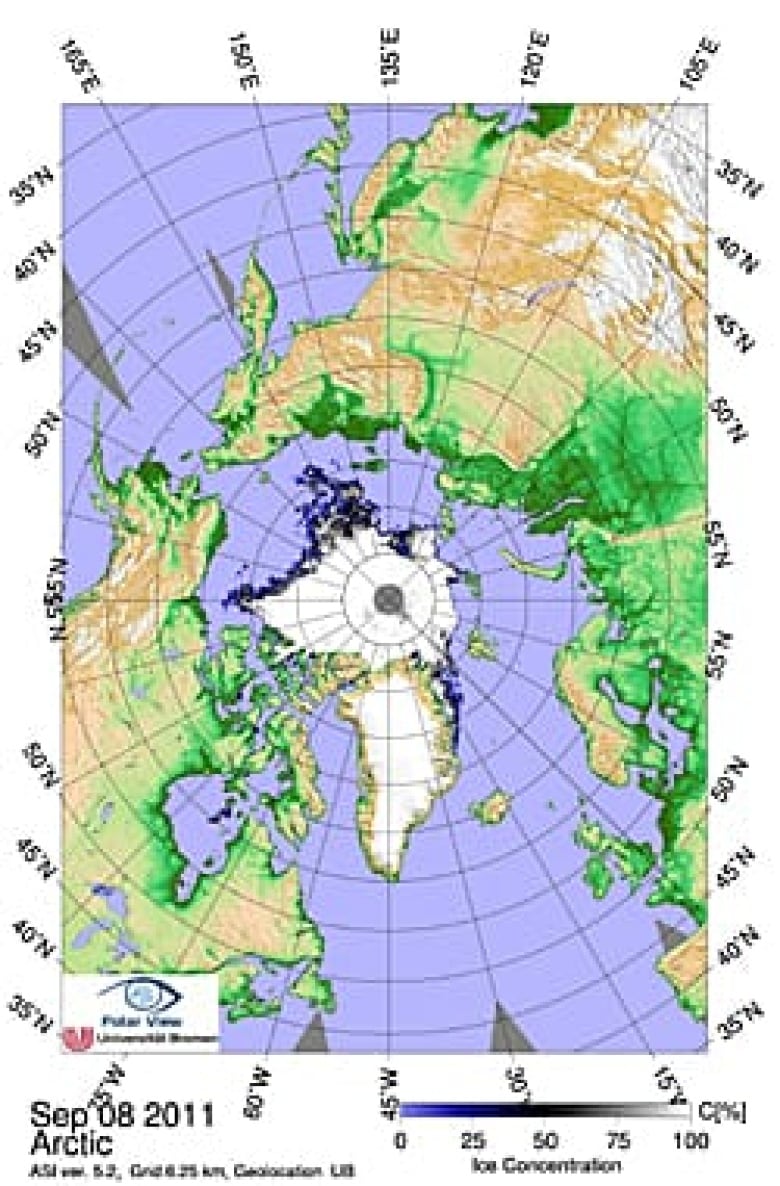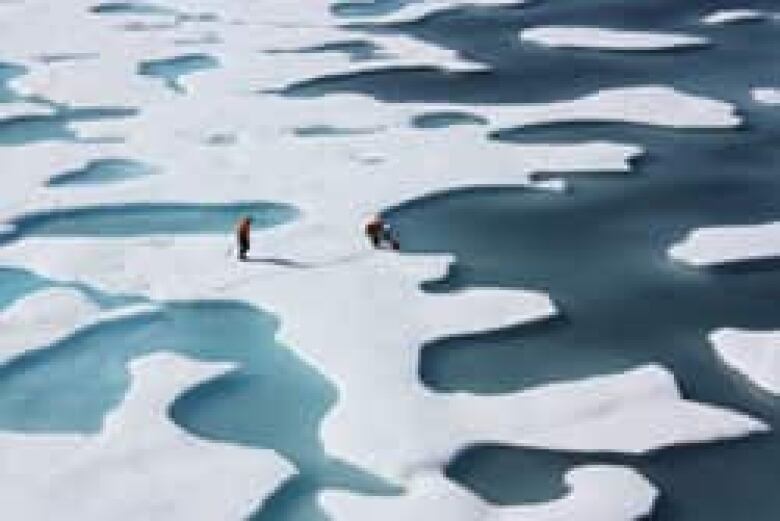Arctic sea ice hits record low

The Arctic sea ice hit a record low of 4.24 million square kilometres on Sept. 8, breaking a previous record set on Sept. 16, 2007 by 27,000 square kilometres, the Physical Analysis and Remote Sensing Images unit at the University of Bremen's Institute of Physical Analysis reported in a news release.
The record could "even be undercut in the next weeks," the release said, as sea ice is continuing to melt.
The University of Bremen gets its data from a Japanese sensor on NASA's Aqua satellite, launched in 2002. Satellite records of Arctic sea ice go back to 1972.
But the researchers led by Georg Heygster, head of a group at the institute that specializes in analyzing satellite images, believe the new record is "most probably" the lowest Arctic sea ice coverage "since the last climate optimum about 8,000 years ago."
Overall, the summer extent of the sea ice has retreated 50 per cent since 1972, the release said.
"Moreover, the sea ice retreat can no more be explained with the natural variability from one year to the next," it added. "Climate models show rather, that the reduction is related to the man-made global warming."

Heygster expects the U.S. National Snow and Ice Data Center, which tracks sea ice using the data from the U.S. Defense Meteorological Satellites Program, to report a similar record in coming days.
As of Sept. 11, the centre reported sea ice at 4.3 million square kilometres still 200,000 square kilometres more than its reported record low of 4.1 million from September 2007. The centre uses slightly different data and analysis methods compared to the University of Bremen, resulting in slightly different figures.
Canadian ice at record lows
The centre reported on Sept. 6 that the Arctic sea ice would likely reach its annual minimum within the following two weeks. It said it would make a preliminary announcement when the ice extent has stopped declining and has increased for several days in a row.
As of Sept. 6, Arctic ice was no longer melting from the surface, but the warmer water below was expected to keep melting the ice from underneath for another couple of weeks.
At that time, sea ice was "almost completely gone" from the Northwest Passage, the centre said, and sea ice was at a record low across the Canadian Archipelago. However, some areas of older, thicker ice had developed in the East Siberia Sea.












_(720p).jpg)


 OFFICIAL HD MUSIC VIDEO.jpg)
.jpg)



























































































